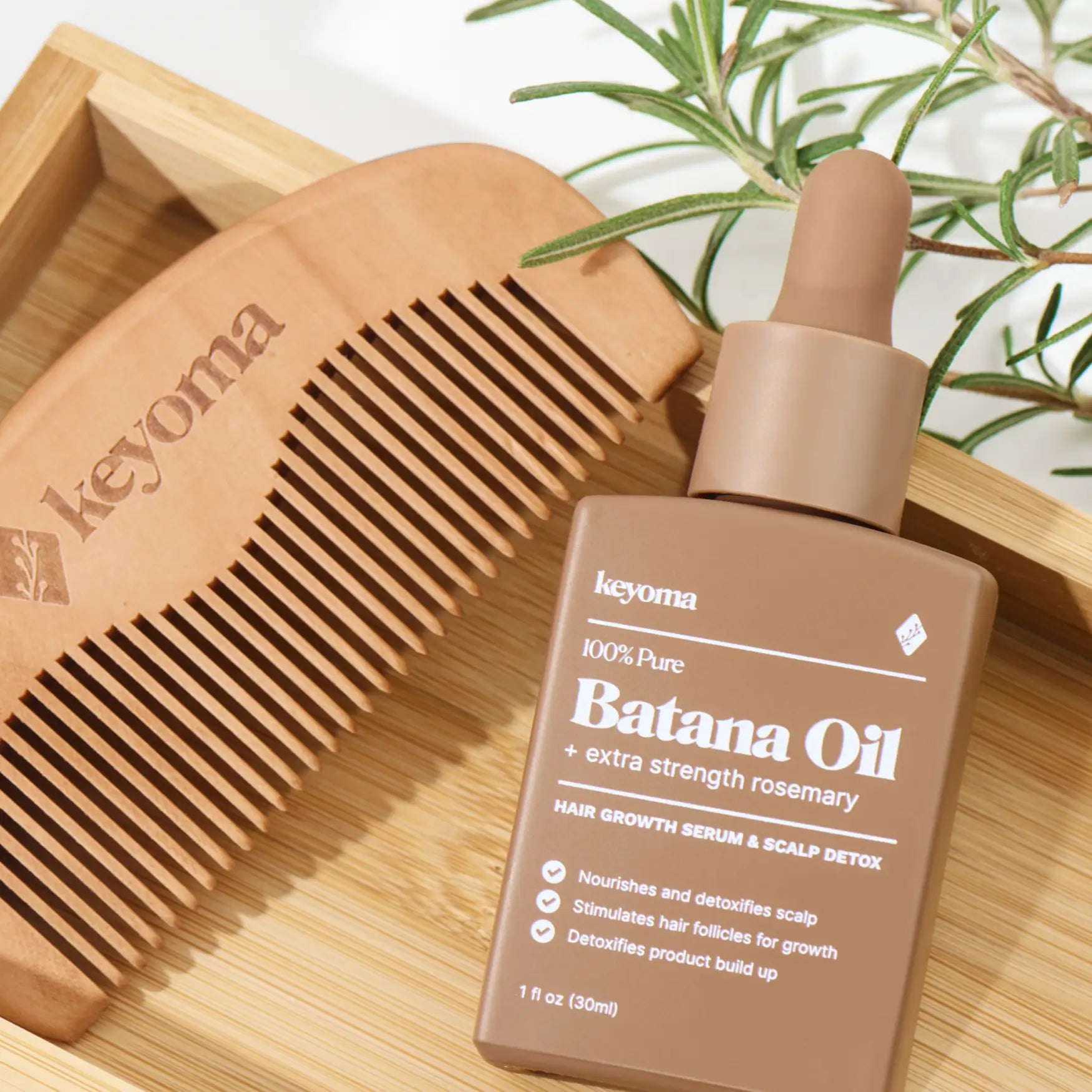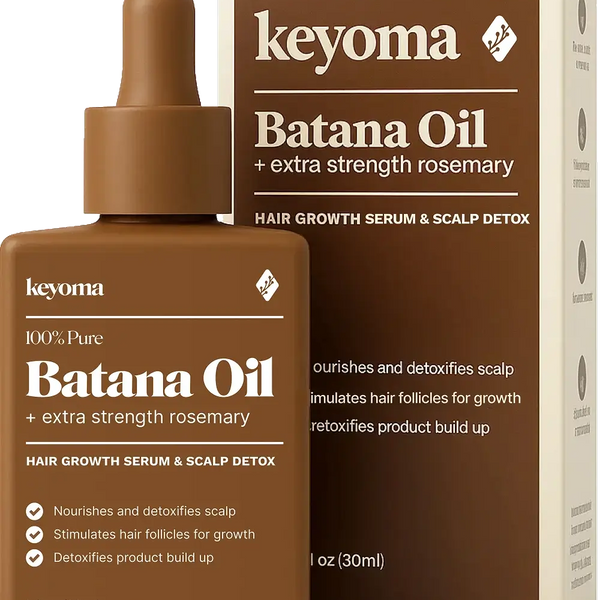In this article
We’ve talked before about how to protect your hair during summer (and yes, a lot of those tips still apply when the weather cools down), but winter brings a whole new challenge: cold air outside and dry heat inside.
Both quietly strip away your hair’s natural moisture, leaving it brittle, dull, and more prone to breakage.
In this guide, we’ll go over simple, proven ways to keep your hair hydrated, strong, and soft all season long without overcomplicating your routine.
How to Take Care of Your Hair in Winter
Wash Hair Less Frequently
In winter, you don’t have much of a choice: outside, the cold air bites, while inside, the dry heat zaps away moisture. Both can quickly strip your scalp of its natural oils and leave your hair dry, brittle, and frizzy.
Washing too often only worsens that dryness, since shampoos, especially those with sulfates, remove protective sebum faster than your scalp can replenish it.
On the other hand, by spacing out your washes, you allow those oils to coat and shield each strand, keeping the moisture and elasticity.
So, should you wash your hair daily during winter? Generally, no. Even if you’re used to frequent washing in summer, winter calls for a gentler approach.
Wash once every 2–3 days if you have oily roots, or once or twice a week if your scalp tends to be dry. Additionally, keep these things in mind:
-
Apply conditioner
-
Use a gentle scalp massage during washing to stimulate circulation.
-
Avoid hot water as it opens the cuticle too much, leading to moisture loss.
Lower Shower Temperature
As we’re on the topic of washing, here’s a mistake that sneaks in easily during the cold months: taking hot showers. It feels amazing, yes, but that blast of heat strips away the thin lipid layer that protects your scalp and hair cuticle.
Once that barrier’s gone, hydration escapes faster, leaving hair dull, rough, and prone to breakage.
To fix this, keep your shower at a comfortable lukewarm temperature instead. Focus shampoo only on the scalp and rinse with cooler water at the end to help the cuticle close and lock in moisture.
Use Dry Shampoo
When the goal is to wash your hair less often during winter, dry shampoo becomes your best friend.
Dry shampoo contains fine absorbent powders, often starch or clay-based, that soak up excess sebum and sweat on the scalp. Removing that oily buildup helps refresh your hair's appearance and volume, extending time between washes.
To use it properly, shake the bottle and spray (or sprinkle) it a few inches from the roots. Let it sit for a minute to absorb oil, then massage gently with your fingers or brush through to distribute.
For powder types, use a light hand. Too much leaves residue and dulls darker hair shades.
That said, as handy as dry shampoo is, it should never replace a proper wash. Your scalp still needs regular washing to effectively remove buildup, sweat, and bacteria that dry shampoo can’t handle just as well.
Apply Hair Oils
Is oiling hair good in winter? Absolutely yes. Natural hair oils act as both an emollient and an occlusive, meaning they help restore the hydration lost from indoor heating and cold outdoor air while reinforcing the natural lipid barrier that protects your cuticle.
These oils are also rich in fatty acids and antioxidants that nourish the scalp, support healthier growth, and reduce winter-induced flaking or itchiness.
Here's how to apply oils the right way:
-
Warm a few drops of your favorite natural oil, whether that’s batana, argan, or coconut, and massage gently onto your scalp and lengths.
-
Keep the application moderate. Too much oil can clog pores or make shampooing more difficult.
-
Leave it on for at least 30 minutes before washing, or overnight (up to 24 hours) for deeper conditioning.
-
Always follow with a gentle, sulfate-free shampoo to remove residue.
-
Never apply it on a dirty scalp.
-
Never use it as a heat protectant, as it can amplify heat damage.
Avoid Heat Tools
Cold weather already pulls enough moisture out of your strands, so adding more heat only makes the situation worse.
Whenever possible, avoid heat styling altogether. Let your hair air-dry naturally, especially on days you’re staying indoors.
If you need a polished look for work or an event, reduce both the frequency (ideally once or twice a week at most) and temperature settings. A medium or low heat is more than enough for most hair types.
Use Heat Protectant
If you can’t avoid using heat tools in winter, applying a heat protectant is necessary to keep your hair from heat damage.
Most heat protectants contain lightweight silicones or polymers that coat the hair shaft, distributing heat evenly and slowing the rate at which the strand’s water evaporates. This keeps the internal structure of the hair (the cortex) from drying out or becoming weak
To use it effectively:
-
Apply a small amount of spray or cream protectant to clean, towel-dried hair before blow-drying or styling.
-
Comb through to distribute evenly, focusing on the mid-lengths and ends.
-
Keep the heat tool moving; never press it on one spot for too long.
And here are a few reminders when applying heat protectant.
-
Always choose a formula that matches your styling tool. Some are better for blow-dryers, others for straighteners or curlers.
-
Skip applying protectant on very oily or heavily oiled hair. It prevents proper coating and can sizzle under heat.
-
Reapply lightly if you’re restyling on the same day.
Don't Leave the House With Wet Hair
This might seem harmless, but when your hair is wet, the outer cuticle layer swells and becomes more fragile. Exposing it to freezing temperatures makes the moisture inside your strands expand, which can lead to breakage and frizz.
Beyond that, a wet scalp exposed to cold air can constrict blood flow around the follicles, slowing nutrient delivery and worsening dryness or temporary shedding.
Here’s what to do instead:
-
Let your hair air-dry at least 80–90% before stepping outside. If you’re in a rush, use a blow-dryer on low heat with a diffuser.
-
Wrap your hair in a microfiber towel to absorb excess moisture quickly without roughing up the cuticle.
-
If you must go out with slightly damp hair, tuck it under a hat or scarf to protect it from the cold.
Wear Hats to Protect Against Cold
Wearing a hat creates a physical barrier between your strands and the harsh elements of winter. It traps warmth close to the scalp and prevents the kind of brittle dryness that often sets in during the season.
When choosing one, go for a hat that fits comfortably without pressing too tightly on your scalp, and ideally one lined with satin or silk. These fabrics help reduce static and friction compared to wool or cotton.
Now, one downside of wearing hats is the tangles that form underneath, which is honestly such a hassle to undo afterwards. The key, therefore, is to minimize them, and one way to do so is by tying your hair in a loose ponytail or bun before you put on the hat.
That said, avoid wearing a hat if your hair is still damp. Apart from being uncomfortable, trapping moisture can chill your scalp and cause frizz, the very thing you’re trying to avoid in the first place.
Use the Right Comb or Brush
Because of hats and beanies, your hair can get pretty flat or lifeless in winter. Using the right comb or brush helps bring it back to life, without causing breakage or static:
-
Boar bristle brush: excellent for redistributing your scalp’s natural oils from root to tip. These natural bristles glide smoothly through your strands, giving them a healthy shine while boosting scalp circulation.
-
Wide-tooth comb: best for detangling after washing as it gently separates strands without pulling.
On that note, keep in mind these dont's:
-
Avoid plastic combs. They build static and make frizz worse.
-
Don’t brush too aggressively, especially when hair is wet. Wet strands stretch and break easily.
-
Don’t skip cleaning your comb or brush. When residue and scalp oils build up on bristles, they spread grime back onto your freshly washed hair, weighing it down and making it look dull instead of refreshed.
Use Leave-In Conditioner
If you’re wondering why you start feeling tiny shocks or seeing flyaways clinging to your jacket and face in winter, it’s because of excess static charge.
Normally, moisture in the air helps distribute that charge evenly, but with low humidity during the season, there’s nothing to balance it out.
This is where a leave-in conditioner helps. These are usually water-based formulas enriched with humectants (like glycerin or aloe) that draw in moisture, and emollients (like natural oils or silicones) that seal it in.
This two-step action keeps your strands hydrated for longer while reducing friction—the main culprit behind winter static and frizz.
To use it effectively:
-
Apply a small amount to damp or towel-dried hair, focusing on the mid-lengths and ends rather than the roots.
-
Comb through gently with a wide-tooth comb to distribute evenly.
-
For extra protection, reapply a pea-sized amount before heading outdoors if your hair feels dry or prone to static.
And an important tip: when choosing, read labels carefully to avoid common harmful ingredients found in hair care products. In particular, steer clear of formulas heavy in alcohols or artificial fragrances, as these can worsen dryness.
Have Your Hair Trimmed
The cold air and low humidity in winter can sap moisture from your strands, leaving them more prone to splitting. Trimming your hair this season is vital, as it helps remove damage before it travels upward and causes more havoc to your strands.
If you’re looking to simplify your styling routine, it’s also the perfect time to consider low-maintenance hairstyles for winter. Cuts like soft layers, blunt bobs, or longer curtain bangs can frame your face beautifully while minimizing styling time and heat exposure.
You can check out our full guide on the best low-maintenance haircuts for ideas and inspiration.
Use Microfiber Towels
Microfibers towels are made of ultra-fine, densely packed fibers that absorb water efficiently and let your hair dry faster, all while staying smooth against your strands.
Compare that with ordinary cotton towels, which have coarse fibers and uneven loops that create friction against the cuticle and expose your strands to more breakage.
To do so effectively, wrap your strands in a microfiber towel or turban. Let it rest for 10-15 minutes, and if necessary, pat dry lightly instead of rubbing.
Use a Humidifier
The colder the outdoors turn, the drier the air inside your home gets, especially with heaters running all day. And, as we've emphasised throughout the article, the lack of moisture robs your hair and scalp of hydration.
A humidifier helps fix this by adding moisture back into the air, creating an environment where both your skin and strands can retain water better.
That said, run a humidifier in the room where you sleep or spend most of your time to help maintain steady hydration levels overnight.
Maintain a Healthy Diet and Lifestyle
Healthy hair starts from within, and that holds true no matter the season. If you want your strands to stay strong and resilient, you have to care for your body the same way you care for your hair.
Below are the do’s and don’ts of real holistic hair care to protect your strands not only in winter, but through spring, summer, and fall as well.
Do’s:
-
Eat a balanced diet. Focus on protein-rich foods like eggs, fish, beans, and lentils, since keratin (the main hair protein) depends on amino acids from your diet.
-
Add vitamins and minerals. Iron, zinc, omega-3s, and vitamins D and C are especially crucial for healthy hair growth and strength. If you're considering supplements, best to consult a health professional first.
-
Stay hydrated. Drink water consistently even when you don’t feel thirsty. The cold often masks dehydration, which directly impacts scalp and strand moisture.
-
Get enough rest. Sleep regulates the hormones that control hair growth and repair.
-
Manage stress. Chronic stress can push hair into a resting phase, leading to increased shedding.
-
Stay active. Exercise improves blood circulation to the scalp, delivering oxygen and nutrients to your follicles.
Don’ts:
-
Don't skip meals or crash diet. Quick weight loss deprives your body of essential nutrients, often triggering hair shedding.
-
Don't overconsume sugar or processed foods. Both cause inflammation that can slow growth and weaken follicles.
-
Don't rely too much on caffeine or alcohol. These dehydrate the body and reduce nutrient absorption.
-
Don't ignore your mental health. Prolonged anxiety or fatigue shows up physically, including through hair dullness and breakage.
Frequently Asked Questions (FAQs)
What hair products do I need in winter?
Prioritize sulfate-free shampoos, hydrating conditioners, and leave-in treatments with humectants (e.g. glycerin, aloe, or hyaluronic acid) and nourishing oils such as argan, batana, or jojoba. A routine incorporating these winter hair care products can help hydrate and seal in moisture.
How can I take care of my hair in winter?
Winter hair care starts with keeping moisture in and dryness out. Wash less often to preserve natural oils, and when you do, use lukewarm water and gentle formulas. Incorporate oil massages once or twice a week to nourish the scalp, and switch to satin-lined hats or pillowcases to prevent friction and static.
What's the best winter hair care for curly hair?
Curly hair tends to be drier by nature, so winter can make it even worse. The best approach is to lock in moisture at every step. Use a sulfate-free, creamy shampoo and follow with a rich, moisturizing conditioner. Layer a leave-in conditioner or curl cream to help your curls stay defined and soft.
Keep Your Winter Hair Healthy and Hydrated
Winter doesn’t have to mean dry, brittle, or unmanageable hair. With the right habits and a few key products, you can keep your strands soft, hydrated, and healthy even when the temperature dips.
Start simple: nourish your scalp with natural oils like batana or argan, switch to a gentle sulfate-free wash, and use a light leave-in or humidifier to fight indoor dryness. These small steps can make a big difference in keeping your hair smooth, shiny, and resilient all season long.
Don't forget to head over to the Keyoma Blog for more in-depth guides like this to help your hair stay strong and beautiful no matter the season.
Featured Product
100% Pure Batana Oil + Rosemary









